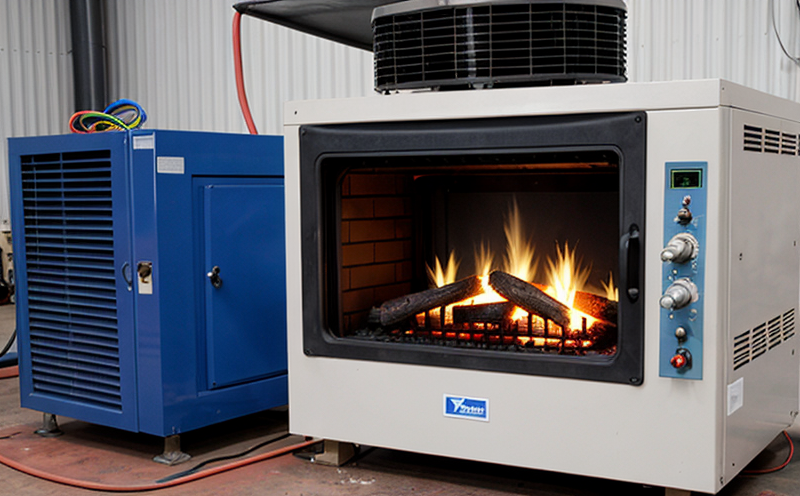EN 62442 Thermal Performance Testing of Control Gear Efficiency
The testing procedure specified in EN 62442:2018 is designed to evaluate the thermal performance of control gear, with a particular focus on determining its efficiency under specific environmental and operational conditions. This test is critical for ensuring that control gears meet the stringent requirements set forth by international standards aimed at promoting energy conservation and sustainable practices in lighting systems.
The primary objective of this testing protocol is to assess whether the control gear can maintain optimal operating temperatures, thereby preventing potential malfunctions or failures due to overheating. This is achieved through a series of carefully controlled tests that simulate real-world usage scenarios, ensuring that the equipment performs efficiently and reliably over extended periods.
Control gears play an essential role in lighting systems by managing current flow, dimming capabilities, and energy consumption. The thermal performance testing process involves subjecting these components to various stress levels to observe their behavior under different conditions. The test setup typically includes a controlled environment that simulates the operational parameters of the control gear within a specified range.
The methodology for performing EN 62442 thermal performance tests is detailed in ISO and IEC standards, which provide comprehensive guidance on specimen preparation, instrumentation calibration, measurement techniques, and data interpretation. The process begins by preparing the specimens according to predefined specifications outlined in the relevant sections of EN 62442. Once prepared, the samples are subjected to a series of thermal stress tests that mimic actual operating conditions.
The testing apparatus used for this procedure includes advanced thermocouples and data acquisition systems capable of recording temperature variations accurately. Additionally, specialized software tools are employed to analyze the collected data, providing insights into how well the control gears handle heat dissipation during operation. The results obtained from these tests serve as crucial evidence supporting compliance with international standards.
One key aspect of EN 62442 thermal performance testing is its emphasis on preventing overheating issues that could lead to premature failure or reduced lifespan of lighting components. By conducting rigorous evaluations, manufacturers can ensure their products meet the necessary criteria for safe and efficient operation in various environments. This not only enhances product quality but also contributes positively towards reducing waste and promoting sustainability goals.
In summary, EN 62442 thermal performance testing is vital for ensuring that control gears operate effectively while minimizing energy consumption and environmental impact. Through meticulous examination of temperature-related parameters, this procedure helps guarantee reliable performance across diverse applications in the lighting industry.
Environmental and Sustainability Contributions
The implementation of EN 62442 thermal performance testing plays a significant role in fostering environmental responsibility within the lighting sector. By adhering to these stringent standards, manufacturers are compelled to design control gears that not only function efficiently but also contribute positively towards reducing energy consumption and minimizing waste.
- Reduced Energy Consumption: Ensuring optimal heat dissipation reduces unnecessary power usage, leading to lower electricity bills for users while simultaneously decreasing overall carbon footprints.
- Prolonged Product Lifespan: Effective thermal management extends the operational life of control gears, reducing the need for frequent replacements and associated costs.
- Enhanced Safety Standards: Properly tested control gears are less likely to overheat or malfunction, thus enhancing user safety and peace of mind.
These contributions align closely with global efforts aimed at combating climate change and promoting sustainable development. As part of this broader initiative, lighting manufacturers must commit themselves to continuously improving their products through rigorous testing procedures like those prescribed by EN 62442.
Competitive Advantage and Market Impact
The adoption of EN 62442 thermal performance testing offers numerous advantages for manufacturers seeking to stay ahead in a competitive market. Not only does it enhance product quality by ensuring compliance with international standards, but it also sets benchmarks for innovation and excellence.
By demonstrating their commitment to environmental responsibility and sustainability, companies can attract environmentally conscious consumers who prioritize eco-friendly products. This aligns well with growing trends towards green purchasing decisions based on ethical considerations rather than purely economic ones.
The successful completion of these tests provides valuable market differentiation opportunities. Competitors without equivalent certifications might struggle to compete effectively against firms recognized for their adherence to high-quality standards like those stipulated in EN 62442.
In addition, participating in such rigorous testing processes can lead to improved brand reputation and enhanced customer trust. Positive reviews from satisfied customers who appreciate the reliability and longevity of products tested according to these stringent guidelines further strengthen a company's position within the industry.
Use Cases and Application Examples
| Application Example | Description |
|---|---|
| Luminaires with Dimming Capabilities | Demonstrating compliance ensures that dimmers can handle increased loads without overheating, thus maintaining consistent performance. |
| LED Lighting Systems | Evaluates the ability of LED drivers to dissipate heat efficiently under various conditions, ensuring longevity and optimal brightness levels. |
| Solid-State Lighting (SSL) Devices | Verifies that SSL devices operate safely within specified temperature ranges, preventing potential failures due to excessive heating. |
- Commercial Buildings: Ensuring compliance helps facility managers select control gears that contribute to energy-efficient lighting installations in large spaces.
- Residential Applications: Meeting these standards is crucial for home builders and decorators looking to specify eco-friendly solutions that enhance both aesthetics and functionality.
- Agricultural Environments: In greenhouse settings, proper thermal management of control gear ensures consistent light levels necessary for optimal plant growth.





